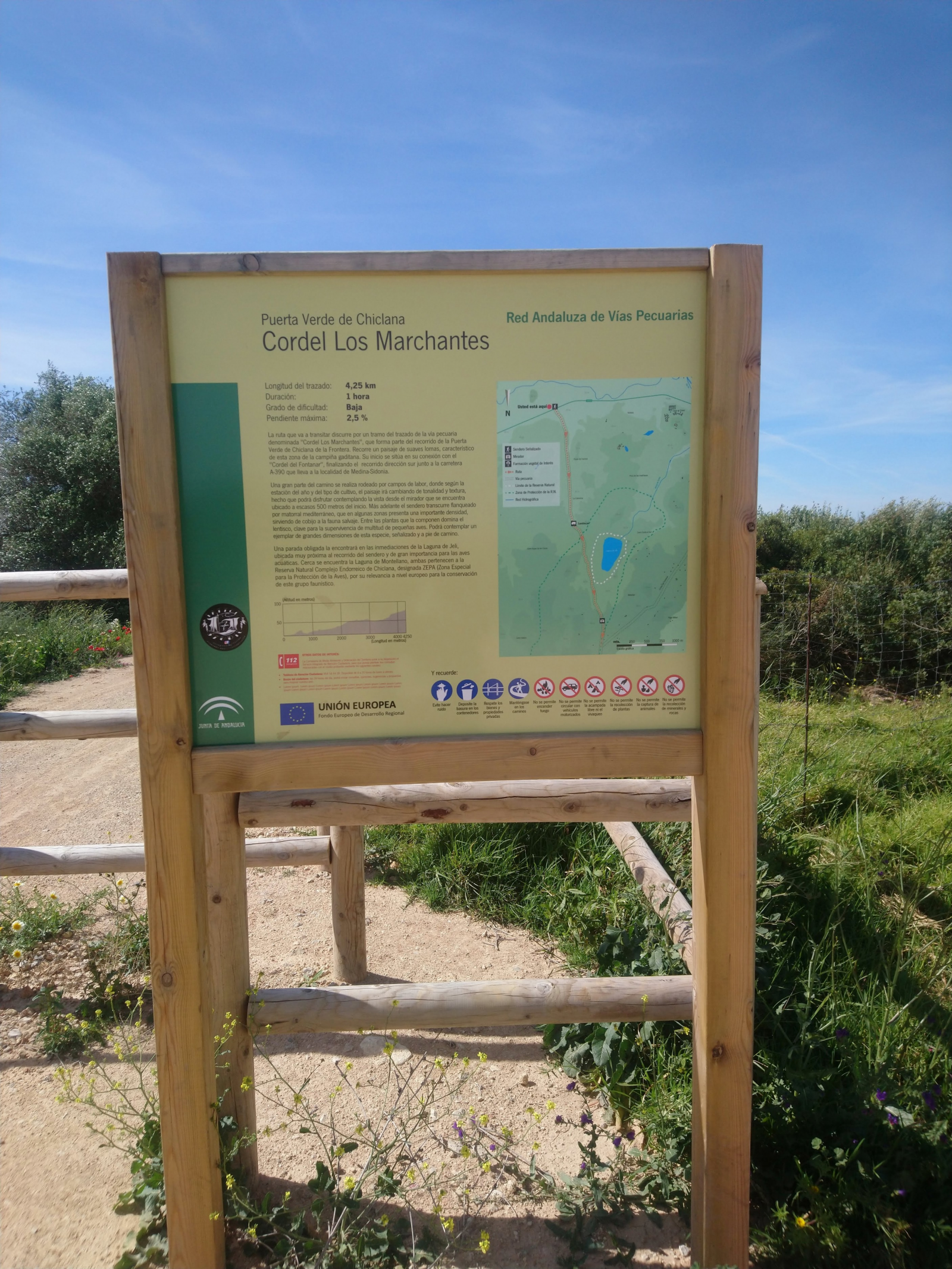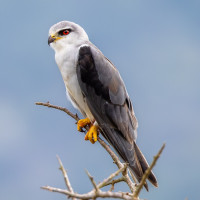Opis
Neither Laguna de Jeli nor Laguna de Montellano are easy to view being half concealed in a dip in the land and surrounded by vegetation. They also tend to dry out making birds still more distant so that a telescope is needed to check them but it's often the surrounding agricultural fields that provide the greatest interest. Although Laguna de Jelli can be reached on foot (c2km) off the A 390 Chiclana - Medina road, the best option is usually to approach via a good gravel track, the Cañada de los Merchantes, along a ridge with superb views (particularly from across the countryside and beyond to the Bahai de Cadiz. By stopping en route to scan across the open countryside you can pick up błotniak łąkowy and, with luck, kaniuk plus during passage kania czarna , Trzmielojad, orzełek, etc. Check the track and the surrounding fields for dzierlatka (zwyczajna), skowrończyk krótkopalcowy,, świergotek polny, pliszka żółta (of the local Iberian race), kląskawka potrzeszcz, kląskawka, dzierzba rudogłowa and, with luck, kulon (zwyczajny). However, the star bird here is drozdówka rdzawa which is an elusive visitor in late spring to the small plots and vineyards that line the track. Being by the coast and on a ridge the area can be good for migrants such as swifts, hirundines, żołna, and sometimes kraska but you may strike lucky as rarer birds, such as Atlas Long-legged Buzzard, have been seen.
The path that runs down to the Laguna de Jeli s c6 km from where you crossed the E 5 (look for a gate and information board). After c500m you reach a viewpoint which gives distant views but you need to go a further 500m or more to really see te birds (but even then theyoften 200m away. When well flooded the cover around the laguna can make it difficult to see the birds hugging the reedbed but when dry the birds become still more distant as the laguna shrinks. With binoculars you should be able to spot flaming różowy and bocian biały (often present in high numbers thanks to nearby rubbish tips) but to identify ducks and other similarly sized birds will need a telescope. These may include sterniczka & marmurka in addition to more usual species such as hełmiatka and, in winter, swistun amerykanski, rożeniec, etc. modrzyk also occur.
Laguna de Montellano is rarely worth the effort as it's often dry and views are distant but if you want to look walk another 100m along the main track and then 700m down a track to your right. A scope is vital as the edge of the laguna is c350m from the track and often the water, if there is any, a nother 10-150m.
Szczegóły
Dostęp
The Cañada de los Merchantes can be reached by turning north off the A 390 just east of the E5 motorway (look for a small footbal stadium) and then first right onto a tarmac lane which, after it goes over the motorway, becomes a dirt track. Go past a monumental arch (to your right) and continue along the track for c5 km bearing right at a fork and then on for c1 km to the parking place. Otherwise pull off on the A 390 Chiclana - Medina road where you see a small parking space and noticeboard (c4 km east of the E 5) and walk the 2 km north to the laguna.
Teren i siedlisko
Rolnictwo/uprawy , Jezioro , Trzcinowiska , Rzadkie drzewa i krzewyWarunki
Brak cienia , Otwarty krajobrazTrasa dookoła
NieCzy luneta będzie przydatna ?
TakUdany sezon obserwacyjny
Przez cały rokNajlepszy czas na wizytę
Wiosenne migracjeTrasa
Droga nieutwardzona , Wąski szlakPoziom trudności szlaku pieszego
Średnio wymagający spacerDostępne
Pieszo , SamochódCzatownia/platforma obserwacyjna
NieDodatkowe informacje
Look out for a stone (c2 km from the bridge over the E 5) bearing an inscription marking celebrating remarkable vista before you. The view over the campo to the sea is so good its known as "Punto Magico"; a good place to stop and scan for birds.


